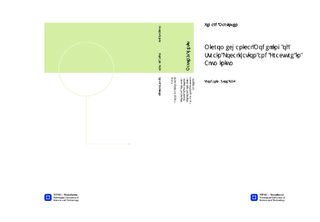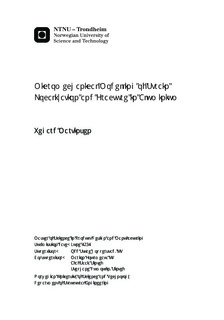| dc.contributor.advisor | Hopperstad, Odd Sture | nb_NO |
| dc.contributor.advisor | Fourmeau, Marion | nb_NO |
| dc.contributor.advisor | Saai, Afaf | nb_NO |
| dc.contributor.advisor | Dumoulin, Stephane | nb_NO |
| dc.contributor.author | Martinsen, Vegard | nb_NO |
| dc.date.accessioned | 2014-12-19T12:01:24Z | |
| dc.date.available | 2014-12-19T12:01:24Z | |
| dc.date.created | 2012-11-08 | nb_NO |
| dc.date.issued | 2012 | nb_NO |
| dc.identifier | 566287 | nb_NO |
| dc.identifier | ntnudaim:8137 | nb_NO |
| dc.identifier.uri | http://hdl.handle.net/11250/237089 | |
| dc.description.abstract | Aluminium is often treated as a homogeneous material. However, when investigated on a microscopic scale, a granular structure is observed. The mechanical properties of the constituents, together with the distribution of stresses and strains, determines the fracture toughness of the material.The objective of this master thesis was to investigate strain localization and fracture in aluminium on a microscopic scale. Relevant literature regarding fracture mechanisms was studied in order to determine which parameters influence the fracture toughness of aluminium. The distribution of effective plastic strain together with the stress triaxiality ratio is thought to give a prediction of the initiation of ductile fracture.A study of the microstructure of aluminium has been carried out. The aim of this study was to gain understanding of the mechanisms leading to the formation of a precipitate free zone (PFZ) near the grain boundary. Also the relation between the mechanical properties of the PFZ and the grain interior was studied. The literature study uncovered that the PFZ is expected to have a low yield stress and a high work hardening rate compared to the grain interior. A simplified numerical model representing a heterogeneous microstructure was developed. The aim of this model was to investigate the effect of certain parameters on the distribution of stresses and strains. The yield stress and work hardening rate of the PFZ as well as the global stress triaxiality, were all variables in a parameter study. A clear tendency of strain concentration in the PFZ was observed, which is consistent with the literature. For low global stress triaxiality, the PFZ oriented at an angle with respect to the external load was found to be the most likely location for initiation of intergranular fracture. Increasing the yield stress and work hardening rate of the PFZ was found to favor transgranular fracture.Due to long computational time, avoiding crystal plasticity analyses is of interest. Whether a material model using isotropic plasticity is able to give the same results as the crystal plasticity model has been investigated. The difference between the average effective plastic strain in the grain interior and in the PFZ was found to be lower using crystal plasticity than when using isotropic plasticity. Using crystal plasticity, the maximum effective plastic strain was found to be dependent of the crystallographic orientations of the grains. However, a more extensive study is required before conclusions regarding the consistency of the results are drawn. | nb_NO |
| dc.language | eng | nb_NO |
| dc.publisher | Institutt for konstruksjonsteknikk | nb_NO |
| dc.subject | ntnudaim:8137 | no_NO |
| dc.subject | MTPROD produktutvikling og produksjon | no_NO |
| dc.subject | Industriell mekanikk | no_NO |
| dc.title | Micromechanical Modelling of Strain Localization and Fracture in Aluminium | nb_NO |
| dc.type | Master thesis | nb_NO |
| dc.source.pagenumber | 144 | nb_NO |
| dc.contributor.department | Norges teknisk-naturvitenskapelige universitet, Fakultet for ingeniørvitenskap og teknologi, Institutt for konstruksjonsteknikk | nb_NO |

